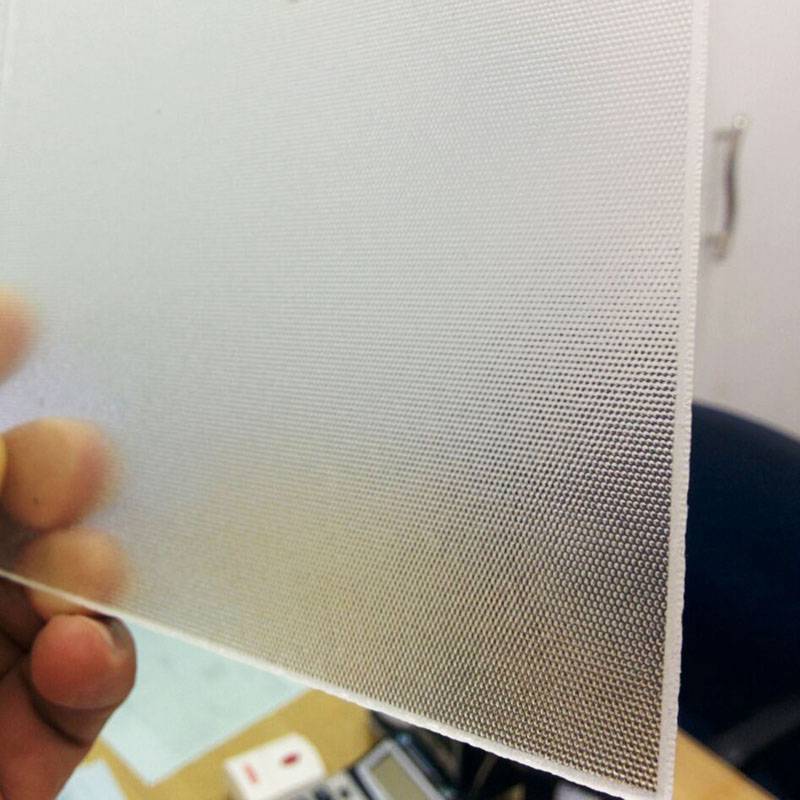Understanding Low-E Tempered Glass A Comprehensive Overview
In contemporary architecture and construction, the choice of materials plays a significant role in energy efficiency, durability, and overall aesthetic appeal. Among these materials, low-emissivity (Low-E) tempered glass has emerged as a favored option for both residential and commercial buildings. This article explores the properties, benefits, and applications of Low-E tempered glass, elucidating its importance in modern design and sustainability.
What is Low-E Tempered Glass?
Low-E tempered glass is a type of glass that has been treated to enhance its thermal performance. The term Low-E refers to the low emissivity coating applied to the glass surface, which minimizes the amount of infrared and ultraviolet light that passes through while allowing visible light to enter. Tempered glass is created through a process of extreme heating and rapid cooling, making it much stronger and more resistant to impact than regular glass. The combination of these two features results in a product that not only meets but exceeds many performance standards in glazing applications.
Benefits of Low-E Tempered Glass
1. Energy Efficiency One of the standout features of Low-E tempered glass is its ability to improve energy efficiency. By reflecting heat back into a building during winter and deflecting it during summer, this type of glass helps maintain a stable internal temperature. This property can significantly reduce heating and cooling costs, making it an excellent investment for homeowners and businesses alike.
2. UV Protection Low-E coatings also offer protection against harmful UV rays that can fade furniture, flooring, and artwork. By blocking up to 99% of UV radiation, this glass helps preserve the interiors of a building and prolong the life of its assets.
3. Enhanced Safety and Durability The tempering process that Low-E glass undergoes increases its strength, making it resistant to shattering and thermal stress. This is particularly beneficial in high-traffic areas or regions prone to extreme weather conditions. In case of breakage, tempered glass shatters into small, blunt pieces, reducing the risk of injury.
low e tempered glass
4. Aesthetic Flexibility Low-E tempered glass is available in various styles, thicknesses, and tints, allowing for versatility in design. Architects and designers can utilize this glass to create visually appealing structures without compromising energy efficiency.
5. Noise Reduction The insulating properties of Low-E tempered glass also contribute to sound attenuation. This is an essential feature for buildings located in noisy urban environments, as it helps create a quieter, more comfortable indoor space.
Applications of Low-E Tempered Glass
Low-E tempered glass is used in a myriad of applications across different sectors. In residential buildings, it is commonly found in windows, doors, and skylights. The energy-saving properties contribute to lower utility bills and increased home comfort. In commercial construction, it is often employed in storefronts, office buildings, and curtain walls, where both aesthetic and performance criteria are critical.
Moreover, Low-E tempered glass is increasingly favored in energy-efficient building projects that aim for Leadership in Energy and Environmental Design (LEED) certification. Its contribution to reducing the overall energy consumption of a building aligns well with the sustainability goals of modern architectural practices.
Conclusion
In conclusion, Low-E tempered glass is a remarkable material that addresses several pressing issues in building design, including energy efficiency, safety, and aesthetic appeal. Its distinct properties make it an ideal choice for those looking to enhance the thermal performance of their buildings while enjoying the benefits of natural light and UV protection. As sustainability continues to play a pivotal role in construction, the demand for innovative materials like Low-E tempered glass is likely to grow, paving the way for a future where eco-friendly practices and beautiful design go hand in hand. Whether for residential or commercial use, Low-E tempered glass represents a significant advancement in the quest for efficient and durable building solutions.
 Afrikaans
Afrikaans  Albanian
Albanian  Amharic
Amharic  Arabic
Arabic  Armenian
Armenian  Azerbaijani
Azerbaijani  Basque
Basque  Belarusian
Belarusian  Bengali
Bengali  Bosnian
Bosnian  Bulgarian
Bulgarian  Catalan
Catalan  Cebuano
Cebuano  Corsican
Corsican  Croatian
Croatian  Czech
Czech  Danish
Danish  Dutch
Dutch  English
English  Esperanto
Esperanto  Estonian
Estonian  Finnish
Finnish  French
French  Frisian
Frisian  Galician
Galician  Georgian
Georgian  German
German  Greek
Greek  Gujarati
Gujarati  Haitian Creole
Haitian Creole  hausa
hausa  hawaiian
hawaiian  Hebrew
Hebrew  Hindi
Hindi  Miao
Miao  Hungarian
Hungarian  Icelandic
Icelandic  igbo
igbo  Indonesian
Indonesian  irish
irish  Italian
Italian  Japanese
Japanese  Javanese
Javanese  Kannada
Kannada  kazakh
kazakh  Khmer
Khmer  Rwandese
Rwandese  Korean
Korean  Kurdish
Kurdish  Kyrgyz
Kyrgyz  Lao
Lao  Latin
Latin  Latvian
Latvian  Lithuanian
Lithuanian  Luxembourgish
Luxembourgish  Macedonian
Macedonian  Malgashi
Malgashi  Malay
Malay  Malayalam
Malayalam  Maltese
Maltese  Maori
Maori  Marathi
Marathi  Mongolian
Mongolian  Myanmar
Myanmar  Nepali
Nepali  Norwegian
Norwegian  Norwegian
Norwegian  Occitan
Occitan  Pashto
Pashto  Persian
Persian  Polish
Polish  Portuguese
Portuguese  Punjabi
Punjabi  Romanian
Romanian  Russian
Russian  Samoan
Samoan  Scottish Gaelic
Scottish Gaelic  Serbian
Serbian  Sesotho
Sesotho  Shona
Shona  Sindhi
Sindhi  Sinhala
Sinhala  Slovak
Slovak  Slovenian
Slovenian  Somali
Somali  Spanish
Spanish  Sundanese
Sundanese  Swahili
Swahili  Swedish
Swedish  Tagalog
Tagalog  Tajik
Tajik  Tamil
Tamil  Tatar
Tatar  Telugu
Telugu  Thai
Thai  Turkish
Turkish  Turkmen
Turkmen  Ukrainian
Ukrainian  Urdu
Urdu  Uighur
Uighur  Uzbek
Uzbek  Vietnamese
Vietnamese  Welsh
Welsh  Bantu
Bantu  Yiddish
Yiddish  Yoruba
Yoruba  Zulu
Zulu 

